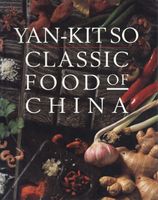Advertisement
Foreign Influences
Appears in
By Yan-Kit So
Published 1992
Foreign foods were introduced to China before the dawn of the Christian era. They arrived as a result of the efforts of the Han emperor, Wudi, to contain his enemies, the Xiongnu (later the Huns in Europe), from harassing China’s western border. He sent the very daring explorer, Zhang Qian, on two expeditions, in 138 BC and later in 115 BC, into the unknown territories west of China. The route Zhang Qian and his men traversed gave birth to what is now known as the Silk Road, which starts in present-day Xi’an (famed for its terracotta army) and travels westward through Dunhuang (famed for its Buddhist cave frescoes), to the Taklamakan desert, and on through Turfan, Kashgar, Samarkand, Bokhara, Iran and Iraq, finally ending in Rome. Chinese historical and literary works have credited this ‘Great Traveller’, the title bestowed on him by his emperor, with bringing back exotic foodstuffs from the West, many of which to this day bear the prefix ‘hu’ or ‘foreign’ to their names. These included pomegranates, grapes, sesame seeds, caraway seeds, walnuts, coriander, alfalfa, spinach, peas, broad beans, onion, watermelon and cucumber. It is doubtful, however, that Zhang Qian and his followers alone brought back all these products, even though they were introduced and grown in China around his time or soon after. The traders who courageously followed in his footsteps, braving the treacherous route to take Chinese silk and other precious things to the Middle East, probably deserve just as much credit for the influx of new ingredients.

